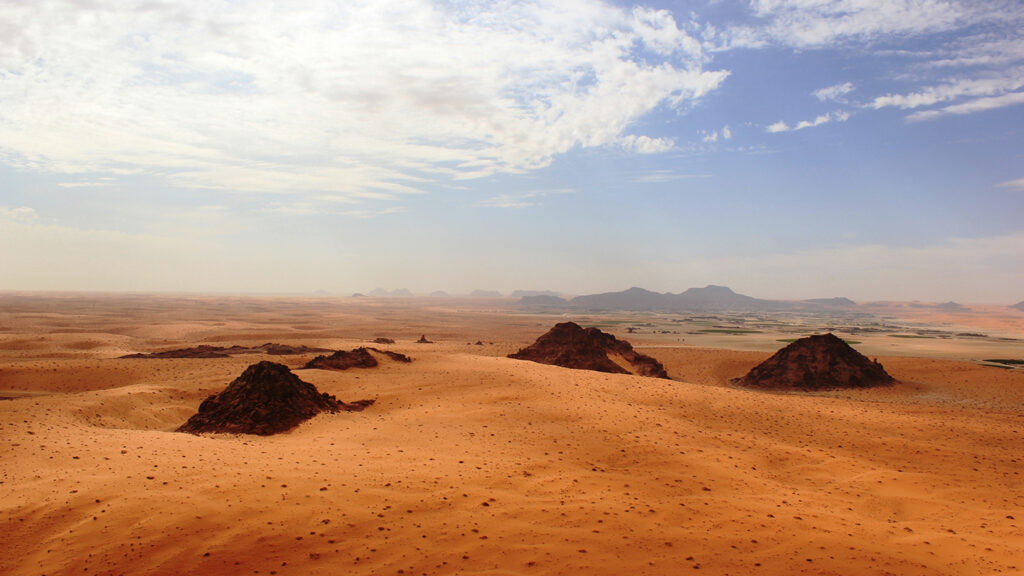Arabia, known today for its desert landscape, served as a “green turnstile” for migrating Stone Age members of the human genus starting around 400,000 years ago, a new study finds.
Monsoon rains periodically turned northern Arabia into a well-watered oasis, creating windows of opportunity for long-ago humans or their relatives to trek through that crossroads region from starting points in northern Africa and southwest Asia.
That’s the implication of a series of five ancient lake beds of varying ages, each accompanied by distinctive stone tools, unearthed at a northern Saudi Arabian site called Khall Amayshan 4, or KAM 4. Sediments from the lake beds, which were linked to periods when the climate was wetter than today, also yielded fossils of hippos, wild cattle and other animals. Like hominids, those creatures must have migrated into the region along rain-fed lakes, wetlands and rivers, an international team reports online September 1 in Nature.

